I am sure you have heard the statement, “Every time I fly, I get sick.” So why does this happen? Are they exaggerating? And what can you do to stay healthy while flying?
Research has shown that about one in five passengers will become sick with a cold or flu after their flight. That’s a big chunk of flyers, at least one in your row of seating, or worse, in your family. Perhaps they aren’t exaggerating.
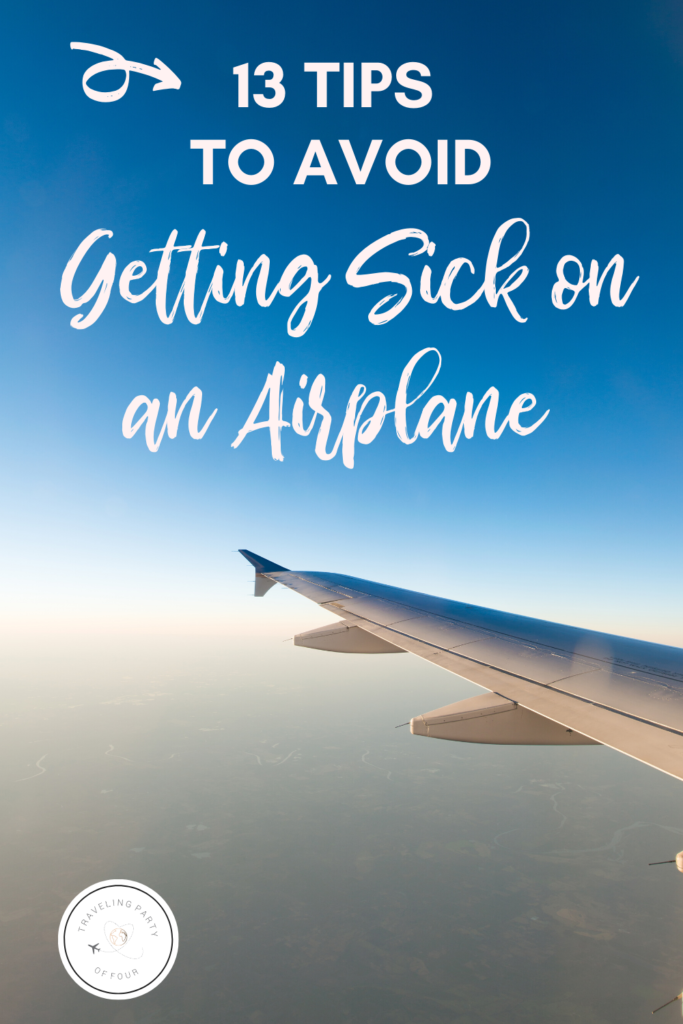
Affiliate Disclosure: There are affiliate links throughout this post. This means if you click on a link and purchase a product through that link, then I will receive a small commission for the referral. And that is kinda cool.
Why do we get sick on an airplane?
As you may already know, microbiologists have proven that germs on surfaces in an airplane can last for hours and even days after a passenger has left. The grossest surfaces include the seat pocket, armrest, seatback, seatbelt, tray table, window shade, overhead air vents, and of course, the toilet handle.
You get sick after flying because you spend hours on travel day touching germ-infested things. You touch contaminated surfaces on your flight. And at the airport, while you are waiting, you touch all sorts of dirty things, too, for example, the touch screen at check-in, handrails, seats, bathroom door, and toilet handles.

Surface contamination of bugs (bacterial and viral) is the issue, not air quality.
The majority of newer model airplanes use HEPA (High-efficiency particulate air) filters to protect the air quality inside your flight cabin. According to CDC.gov, “the cabin air environment is not conducive to the spread of most infectious diseases because the HEPA filters capture 99.9% of particles, including bacteria, fungi, and larger viruses or virus clumps.”
Let’s get started. How can we stay healthy on an airplane?
Begin by arriving at the airport healthy.
Get a good night’s sleep the night before. Go for a walk or hit the gym in the morning (of course, this is only realistic if you have a later flight). Eat a light, easily digestible meal and hydrate.
Boost your immune system with Vitamin C.
My mom always said to take my Vitamin C, and I do. It doesn’t hurt to take a supplement like Emergence C, but I can’t find any real data that confirms that Vitamin C protects you from infection.
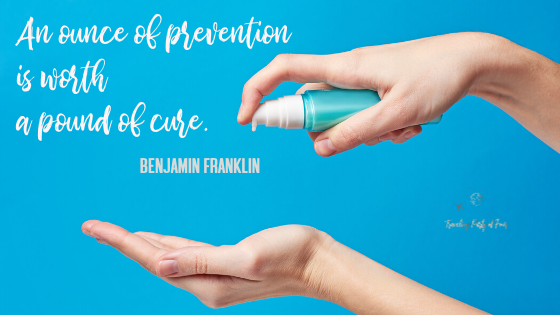
Get to the airport early.
Get to the airport early, so you are not stressed about the hustle and bustle of the terminal. Do online check-in, so all you need to do is print your ticket at the kiosk, check your bags, and find your gate. If you experience airport anxiety, you will love this post on ways to destress at the airport before you board the airplane.
What are the airlines doing to keep us from getting sick?
I have been reading about this very topic for days. As a mom and a traveler, I need to be confident that my family is safe. The information that I have been reading is changing every day. Eventually, the airlines will outline a universal policy for cleaning, disinfecting, and keeping passengers safe.
On March 4, 2020, the Center for Disease Control and Prevention (CDC) updated guidance for airlines and airline crew members, adding a section for cleaning the aircraft and for identifying and reporting a sick passenger who exhibits signs of COVID-19.
This catastrophe is ongoing, and as more experience and knowledge occurs, these guidelines will be updated. Click here to review the latest changes.
Across the board, the airlines are cleaning more in-depth and more often, plus blocking seats to allow proper social distancing. Some flights are now boarding back to front, although not all of them. And many airlines are suspending in-flight services.
Staying healthy during air travel.
You get sick on an airplane because you touch gross things, and you are in contact with sick people. It’s not the air quality, and it’s not the food. So, the two most significant bits of advice to keep from catching a cold, or worse, while flying are to wash your hands and stay away from people who are sick.
- Use sanitizing wipes to clean your seating area thoroughly. Be sure to include all surfaces; the seatback, armrests, seat belt, tray table, window shade, and where you open the air vent.
- Don’t touch the pocket or the magazines in it.
- Use hand sanitizer, yes, even after you wash your hands.
- Keep your air vent on.
- Avoid the aisle seat, too much exposure to people walking back and forth.
- Bring your own water bottle and hydrate. Remember, the water in the bathroom is NOT DRINKABLE.
- Avoid touching your face and mouth.
- Don’t drink too much alcohol, only just a little.
- Pack healthy airplane snacks (can be purchased after TSA).
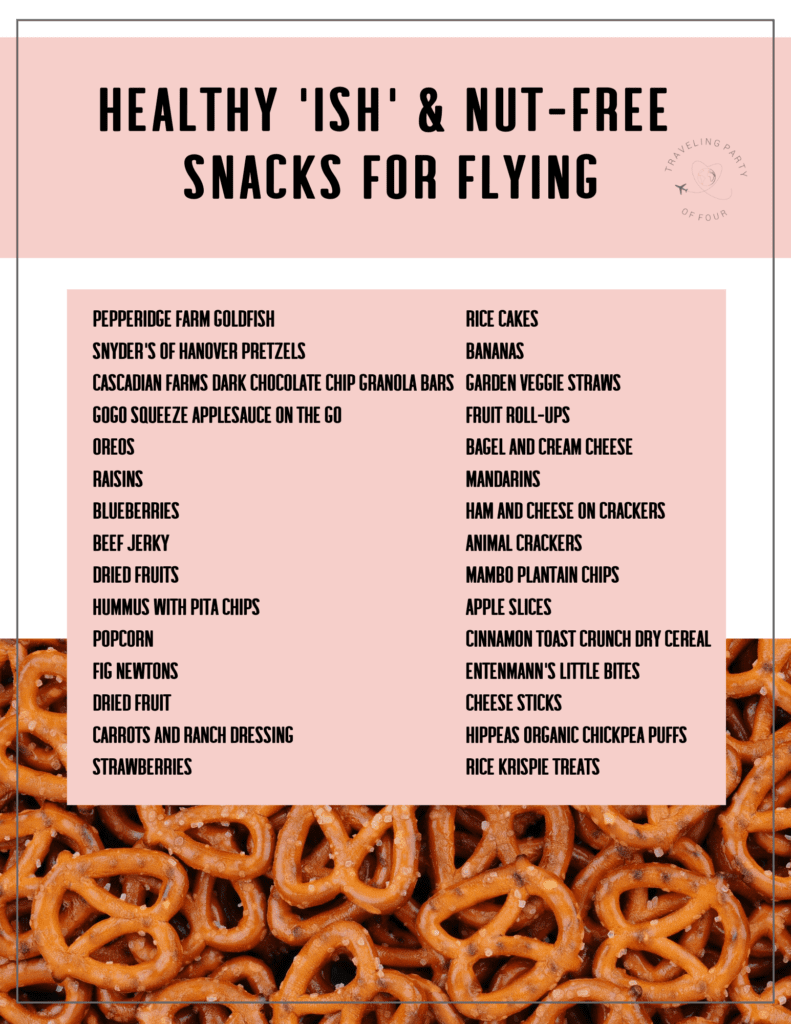
- Bring your entertainment.
- Pack your pillow and blanket.
- Wear comfortable, loose fit clothing.
- Use your compression stockings.
More on how to rock a long haul flight like the champion you are, right here.
How to Avoid Motion Sickness on an Airplane.
- Book a window seat and keep your eye on the horizon.
- Avoid the back of the plane.
- Don’t read. Staring at something stationary while the plane is moving may cause nausea.
- Pack Dramamine, just in case. Be aware that Dramamine can cause drowsiness.
- And acupressure bracelets may help, too.
- Avoid spicy and greasy foods.
- Pack ginger tablets or ginger candy.
- Drink ginger ale, if available.
- Peppermint helps, too.
- Hydrate.
Motion sickness is genetic in this family. Not kidding, confirmed by 23 and Me! We have managed to sail, drive through the mountains, and fly, keeping this issue under control, for the most part. Here is more information and advice on how to manage motion sickness.
Deep Venous Thrombosis Prevention.
I have worked for many years as a Hematology Nurse Practitioner and have seen my share of patients who have developed a Deep Venous Thrombosis (DVT) after a long haul flight (a flight four hours or more). The risk is quite small, but this can happen to even the fittest traveler.
Risk factors in developing DVT include obesity, tobacco abuse, having a cast or recent orthopedic surgery, oral contraceptives, pregnancy, personal or family history of DVT or other thrombotic related events. There are some genetic mutations, often unknown, that can predispose a person to develop a DVT. It is not a common occurrence, but it does warrant travel precautions.
- Drink plenty of water; this assures that you have to get up several times to use the restroom, thus increasing mobility during your flight.
- Try to move around the flight when safe. Stretch your legs and remain out of that seat for a bit.
- Invest in Compression socks, which are useful for prevention and comfort as well.
For a healthy individual with none of the risk factors that I have listed above, simply staying hydrated and walking around the flight a few times should be enough for prevention. However, if you have any of the above risk factors, speak to your physician about further recommendations.
If you wish to review the guidelines for the prevention of DVT in long-distance travel from the American Society of Hematology, this recent article will help.
To learn more about how to plan healthy travel with your family, download the recently upgraded 50-page Ultimate Trip Planner by signing up below. But, only if you’re ready.
Travel Tips for Prevention of Jet Lag.
Jetlag occurs when your body’s natural clock is disrupted by traveling to a different time zone. The symptoms of jetlag can range from minorly annoying to interfering severely with your travel plan. Here are the symptoms of jetlag.
- Fatigue is the most common symptom.
- Grumpiness.
- Disoriented.
- Nausea.
- Poor appetite.
- Insomnia. You know, when you are so tired you can’t sleep?
There are several ways to prevent jetlag.
- I have mentioned the importance of this before, but arrive for your flight healthy, well-rested, and nutritionally sound. Don’t start sleep-deprived, full of greasy food, or hungover.
- The selection of your flight time can make a difference. A late evening flight when you would typically be sleeping may help you rest on the plane.
- Switch your watch to the current time zone as soon as possible. There is no reason for you to be reminded of what time it is at home.
- Sleep on the plane, if you can. If it is difficult for you to sleep on an airplane, talk to your doctor about a prescription sleep aid. You can also consider Melatonin.
- Get a full night’s sleep when you arrive at your destination. And don’t fight a power nap the next day.
- Give yourself some extra time and grace for the first 24 hours in the event of jetlag. Adjust your schedule if necessary.
- I have heard that pushing through that first day, staying awake, and busy all day may help prevent jetlag. I have not tried this approach, but I am willing to next time we travel across time zones.
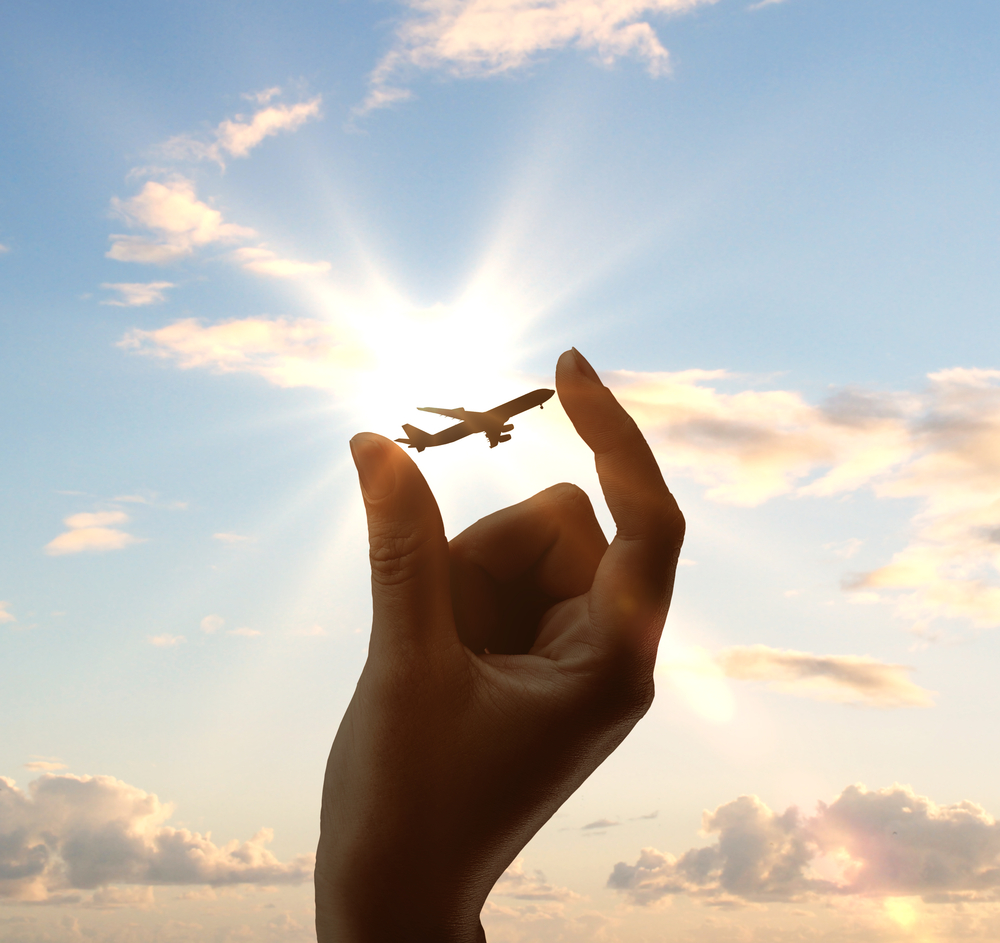
Let’s wrap it up with this list of 13 tips on how to stay healthy on an airplane.
- Arrive at the airport early, healthy and well-rested, and comfortably dressed.
- Be sure to bring your pillow and blanket.
- Eat a light, easily digestible meal before the flight.
- Pack snacks from home.
- Once you board, clean off all contaminated surfaces with disinfectant wipes.
- Don’t touch the pocket or the magazines in it.
- Turn on the air vent.
- Hydrate, but don’t drink the water from the faucet in the airplane bathroom.
- Don’t drink too much alcohol.
- Use hand sanitizer even after you have washed your hands.
- Avoid touching your face.
- If you are prone to motion sickness, consider taking Dramamine before your flight, chew on ginger candies, avoid greasy, spicy foods, and hydrate.
- Don’t forget your compression hose.
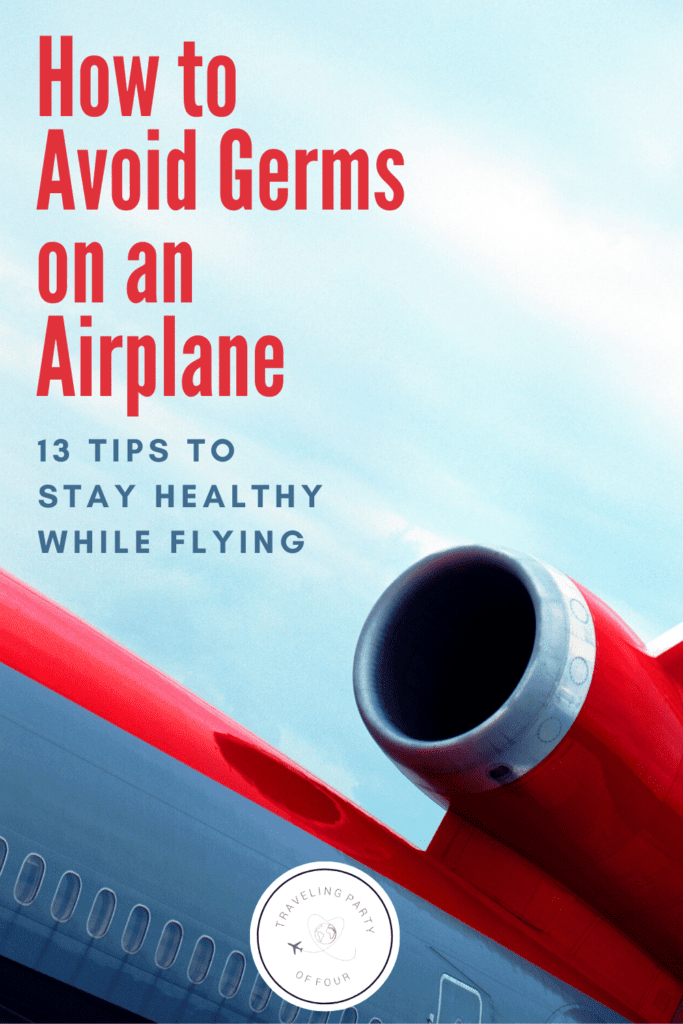
Once you have landed, don’t let your guard down. There are still many things that you will touch and lots of people around to expose you to grossness. So, always wash your hands, don’t touch your face, stay away from people who are sick.
And if you do get sick, rely on Travel Insurance for peace of mind.
Stay healthy and safe. And send me pictures.
What is the go-to item that you pack in your carry on bag that keeps you well?

















Carrying disinfectant wipes to clean the seating area is good advice. Thanks for sharing these tips.
Absolutely. We need to keep ourselves and our families safe. I hope one day soon, we can travel again (but not too soon).
Thanks!! I needed this info! I am so nervous to start flying again!
I am, too. I don’t know when I will be able to go again. It may be a while. I am going to have to stick with some road trips.
Hi Jenny, I love these tips. As a skincare addict myself, I LOVE pampering myself inside an airplane too. It is a little moment of self care that makes me feel great during the flight. I also liked the recommended snacks. That is a great way to stay healthy and to save money (considering the airport food is so expensive).
I do, too. My daughter and I recently started that little trick of a day spa before we land. It’s fun and refreshing.
Great suggestions!! I always take my essential oils too!!
I have been reading a lot about essential oils and have started to use them myself. Great idea.
This article has been so helpful for me I took notes! I am flying next week and definitely will be extra careful.
I will be interested to hear how your flight is in these crazy times. Let me know how it goes. And be safe.
Great article, thanks for the advice. All the germs are a little creepy!
I agree. I feel like we are all one big cootie!
I like how you also recommended travel insurance! Definitely one I will look into now!
Yes, you never know. Things happen unexpectedly, it’s better to be prepared, for sure.
Okay I needed to see this snacks list! In 4 days my partner and I are returning from living in Canada for 3 years back to Australia. Due to the nature of the situation right now, our flight time is much longer than it normally would be (40 hours total) and meals are limited. We were just talking about what snacks to buy to take with us! I’m taking this list with me to the grocery store!! Thank you!
Awesome, healthy-ish snacks are key. Nothing worse than hangry travelers! Be safe.
I never really thought about disinfecting the seats and tray tables. I guess I assumed that the flight crew did that after each flight. Can’t be too careful these days though. Printing out your list for our next trip.
Thank you. It’s funny, I have always thought maybe I should wipe down the seat, and never do simply for that reason. But, nowadays, I would rather be safe than sorry.
I love this! I always end up sick after traveling on a plane.
I started carrying wipes and hand sanitizer with me all the time now.
Great tips! I’ll be saving this for later
I started carrying all of this stuff when I began traveling with kids. All of it!
I may have to travel on a plane soon and I’ve been pretty nervous, but these tips are so helpful and put me a little more at ease!
I am so happy to hear this. Be safe.
I travel a lot for work and your tips are very useful. It’s been my practice to take my own food and snacks but I’m lacking on point 6 and 7. 😉
I always do, I can’t do the airplane food, and I really can’t eat a big meal on a plane. So snacks it is.
Ugh. This stresses me out! haha. I’m going on vacation at the end of this month && I’m terrified about the plane. But we have to live – so I’m taking the risk. I hope I don’t regret it! I’ll be bookmarking these tips though!
I agree, we have to live. It seems like most airlines are doing the right thing. And then add your own safety measures. And have fun. Let me know how it goes. We will probably go over Thanksgiving.
Really good tips and advice. Planes can be pretty yucky!!
Seriously, full of cooties. Wipe it all down, and be safe. And don’t put your hand in the pocket…yuk!
I’m thinking about going back to Vegas in September so all these tips are very helpful! I haven’t flown in over 10 years so it will be interesting lol!
Vegas, wow. Be safe, have fun, and don’t lose too much money!
I traveled often before this. Great article.